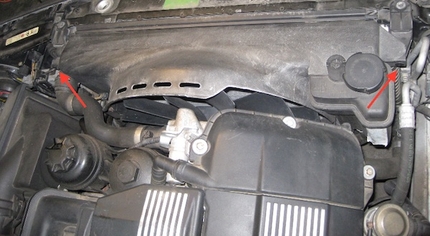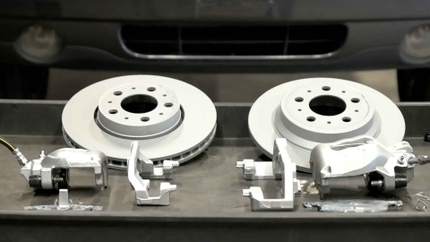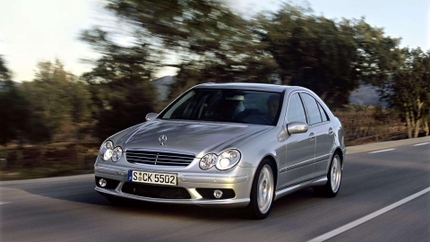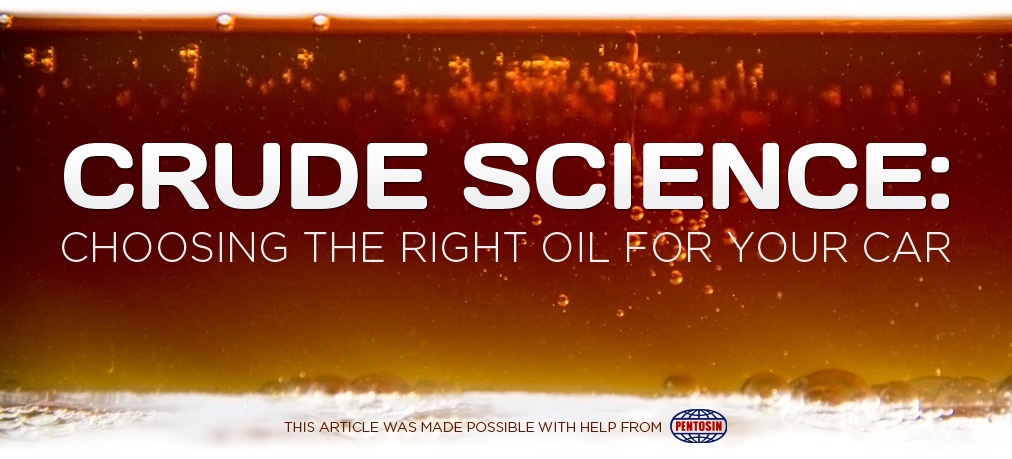 So, you’re in the motor oil section of your favorite auto parts retailer, FCP, staring at the gorgeous images our in-house photographer’s eye has captured (shameless plug inserted accurately), all displaying the various containers along with different numbers on them. Right about now, you may be thinking to yourself; which oil suits my situation? What kind of oil does my vehicle need? What is the meaning of life? Well, maybe not that last one…there’s, 40 weight and 50 weight motor oils spreading along the product pages and you eventually decide on the 40 weight. Why? Well, your subconscious has seemingly made this decision for you after watching, The Fast and the Furious, way too many times over the years.
So, you’re in the motor oil section of your favorite auto parts retailer, FCP, staring at the gorgeous images our in-house photographer’s eye has captured (shameless plug inserted accurately), all displaying the various containers along with different numbers on them. Right about now, you may be thinking to yourself; which oil suits my situation? What kind of oil does my vehicle need? What is the meaning of life? Well, maybe not that last one…there’s, 40 weight and 50 weight motor oils spreading along the product pages and you eventually decide on the 40 weight. Why? Well, your subconscious has seemingly made this decision for you after watching, The Fast and the Furious, way too many times over the years.
Today, we are going to clarify what exactly motor oil is, the types of motor oil, how it’s made, what its purposes are, and rounding it out by helping you choose the best motor oil for you. Motor oil is primarily an engine lubricant. All moving components need something to help reduce friction to in order to keep the parts moving freely. This is the most important function that motor oil performs. Originally, motor oil was so simple. It resembled what we pumped out of the ground from an oil well, but as engine technology improved so did its blood. The engine oil of today is put together by one part science and one part magic. Your typical motor oil is based on two components: base oils and additives. These are formulated and blended oils to meet specific standards, but we’ll get more into that later.
Motor oil is also tasked with cleaning the inside of your engine. It does this in two different ways. It helps lubricate the engine by traveling through it in a series of channels and pathways. An engine wears with time and in doing so, will create small metal shavings from the constant metal-to-metal contact. Some of the most common wear items are bearings and piston rings. These components take a lot of abuse during their service life. So, these metal shavings carried by the engine oil to the oil filter where they are trapped from re-entering the engine (this is also why you should replace your oil filter with every oil change). Operation from the engine itself is also dirty. Internal combustion creates microscopic coke particles and black soot, which is accumulated by your vehicles motor oil. This is why motor oil always drains black and smells burnt. It is also why it is important to perform routine oil changes. Motor oil helps clean the inside of the engine with its additive package, as well. These additives can help fight deposits, rust, and corrosion. Oil helps clean your engine, period. This is a proven science, researched and tested by all major motor oil engine manufacturers. These additive packages are what separate your average oil from first-rate oil. At the same time, we realize that these additive packages may seem confusing. We will get more into additive packages later and why they are important.

Motor oil performs another necessary aspect for your engine; it keeps it cool. This may seem surprising to most due to the fact that most think of coolant, radiators, and fans that help keep your motor at the proper operating temperature. This is absolutely true. However, motor oil is just as important to your engines cooling system. First and foremost, engine oil helps carry heat away from moving parts. Just like engine coolant, the oil goes through constant heating and cooling cycles. As oil is pumped through the inside of your engine, it collects heat (coolant does the same thing) from key moving parts, such as the cylinder head, pistons, crankshaft, and on some cars, the turbocharger. High engine speed and longer durations of higher engine speed generate additional heat, making it critical for your engine oil to absorb it. The heat absorbed by the oil can then be exchanged at one of two places depending on the vehicle. Every car has an oil pan of some sort. The oil pan is low slung and lies close to the ground. Heat is transferred from the oil to the metal of the pan where it is then cooled by air-flow traveling under the vehicle. High performance cars are often equipped with an external oil cooler, which is a radiator for engine oil. Many people with modified cars choose to install oil coolers if their car didn’t come equipped with one from the factory.
So, oil isn’t as simple as maybe you thought it would be. It serves numerous important functions and we assure you that by the end of this article you will have a better understanding of how to choose your motor oil. Before we could do that though, we need to show you the value of good motor oil. On the market today there are two types of motor oil. The choices are synthetic or non-synthetic (conventional) motor oil.
Conventional Oils
Conventional or non-synthetic motor oil is the “original” motor oil, It is most commonly used on older vehicles and lower performance vehicles. Simply put, conventional oil is crude oil that has been filtered. Some conventional oils on the shelf today are treated with a basic additive package for added engine protection. Conventional oil also tends to be thicker than synthetic oil and will generally create a higher oil pressure inside the engine, which is beneficial. However, conventional oil breaks down much faster than synthetic oil and must be changed more often to prevent sludge build up. Another conventional oil side effect is its range of extreme characteristics between cold and high operating temperatures. This is why it was common practice to run different oil viscosities at different times of the year. Most people would run thicker oil during the summer and thinner oil during the winter. This major disadvantage to running thinner oil for startup protection during the winter is often times this led to additional engine wear at operating temperatures. To put it plainly, conventional motor oil has a wide array of characteristics between different temperatures. This of course makes them unpredictable and engine protection cannot be controlled. This is why synthetic motor oils were introduced to the market.
Something else to take note of is the lack of ZDDP in today's conventional oils. ZDDP was introduced into motor oils 70 years ago as one of the best metal-to-metal wear additives ever invented. When a ZDDP-based oils is used in tight tolerance engines in the 1980s and 1990s, it was not unusual for an engine to go 200,000 to 300,000 miles before it started to burn oil from worn rings. Some engines, like Volvo engines, did even better and far outlasted their bodies. However, the problem with ZDDP is it is toxic to humans and aquatic life. It also poisons catalytic converters over time. Finally, the EPA said "get it out of the motor oils for cars." That decision was probably the driving force behind the car manufacturers switching to full synthetic oils in the past decade.
So without ZDDP, where does that leave us? If you have a flat tappet (up through 1950's engine design) engine, you need to add ZDDP to your motor oil. If you have a 1980's or 1990s car, you will likely see much greater wear on the engine with conventional oil without ZDDP. Just plan on scrapping it or rebuilding the engine much sooner than you normally would. You could also investigate using a blend, but as you'll come to know, you may see some bad leaks on an old engine. Beginning in 2000, automakers started recommending a blend of conventional and full synthetic. (ZDDP Addition by: Jim Burton)
Synthetic Oils
Synthetic motor oils are all about the latest science and technology are even created in a laboratory. The formulation for synthetics is constantly being re-engineered and refined. In fact, synthetic motor oils were commonly used in military vehicles and jet engines. Synthetic oil is designed to not break down and to provide consistent protection across a wide array of temperatures. This is why conventional motor oil has been phased out by most vehicle manufacturers. The introduction of synthetic motor oil changed the engine design. Due to synthetic’s flow and protection properties, engineers were able to build engines with smaller clearances, which in turn created, “tighter engines”. These tighter engines produce more power with less fuel and are more efficient. Synthetic motor oil also helps reduce friction due to their superior lubrication properties. In a way, the introduction of synthetic motor oil changed engine design. Synthetic oils are also treated with more additives that help protect the internals of your engine for a longer period of time, in between oil changes. Overall, synthetic motor oil remains consistent across a wider range of engine and climate temperatures, reducing the need to switch motor oils depending on the season. There are exceptions to this rule but only in extreme circumstances or climates. One of the major turnoffs of synthetic oil is its price. Your average synthetic oil can cost up to three times more than its conventional counterpart. However, this is offset due to synthetic’s longer service life.
At this point you may be thinking, “I’m going to change my oil to synthetic from conventional.” We highly recommend that you don’t do this for the following reasons. A lot of people make the switch to synthetic motor oil on their older vehicles because of the advantages, but synthetic oil is thinner, which means it tends to work itself into places easier than conventional oil. This can often create oil leaks from seals that may not have otherwise leaked. Additionally, the additive package in synthetic oil often times eats through oil sludge surrounding seals and gaskets, compounding the possibility for a severe oil leak to occur on an older higher mileage vehicle. And lastly, synthetic oil on an older higher mileage engine creates noise. It is not uncommon for an older higher mileage engine to get significantly louder while running synthetic oil. FCP recommends sticking with the oil that your owner’s manual recommends. Synthetic oils are notorious for their additive packages. We feel it is worth going through some of these additive packages and how they work in your engine. We often hear from customers that they feel these additive packages are a marketing tactic and that they don’t provide a real benefit. We disagree with this.
So, what is an oil additive package?
Basically, it’s like antibiotics for your engine. Additive packages are designed and formulated for several different purposes, but some of the most important ones help control chemical breakdown, maintain viscosity, and maintain lubricity.
Let’s delve a little deeper into these additives individually:
Oil Additives
Dispersants: Dispersants help keep sludge from forming on internal engine parts by keeping contaminants suspended in the oil until they are removed from the engine (this is why oil changes are important).
Detergents: Used on high temperature surfaces and moving parts (piston ring area and under crown of the piston) and helps prevent deposits from forming. These detergents get consumed during the service life of your engine.
Anti- Wear: These agents create a protective coating on metal surfaces inside your engine. These work under high operating temperatures and high engine load conditions. These agents protect cams, lifters, pistons, piston rings, and cylinder walls. The layer is sacrificial and is consumed in the protection process. Without this layer your engine would have increased metal-to-metal contact. Because these agents wear down over time, it’s important to make sure you change your oil at the recommend intervals.
Friction Modifiers: These agents help reduce friction under high RPM’s, engine loads, and temperatures. They help maintain efficiency and economy. Just like the other additives they do diminish over time.
Antioxidants: Oxidation occurs from exposure of oil to oxygen at high temperatures. The exposure results in accelerated aging of the oil thickening. This is how sludge and deposits start to form. Antioxidants slow oxidation in the oil to ensure that it keeps running clean.
Anti-Foam Agents: Air bubbles in engine oil can create foam. This foam makes it more difficult for oil to get pumped through the engine and in severe cases can cause engine damage. This additive especially works at high temperatures.
Corrosion inhibitors: Just like the body of your car, the internals of your engine can be susceptible to rust and corrosion. This additive package coats all the metal surfaces inside your motor protecting it from rust and corrosion.
Viscosity Index Improvers: The viscosity index is a measure of an oils resistance to changes in viscosity, as temperature changes. Viscosity index improvers help maintain oil viscosity over a wider range of temperatures.
Pour-Point Depressants: These are used in multi-grade oils to ensure good oil flow at low temperatures. Flow is obviously important in cold engines, as oils that are difficult to pump require additional energy. This also makes sure your oil can reach the cylinder head quicker to prevent wear and ensure protection of your vehicles valve train.
If you’re wondering what additives an oil you are interested in purchasing has, just look at the label on the back on the container. Most manufactures talk heavily on the additives they use in their oils.

How to Select the Right Oil For You
The first thing you need to find out is whether your vehicle takes conventional oil or synthetic oil. Your vehicles owner manual will have this information in it. If you lost or cannot find your owner’s manual, please feel free to give us a call so we can look up the information for you. Once you know what type of oil your engine takes, it’s time to determine what viscosity is best for you.
Below is an example vehicle along with the exact manufacturer guidelines to help illustrate the selection process:
Vehicle: 2000 BMW 528i
Recommended oil fills per BMW: 5W30 or 5W40
BMW’s Oil specification: BMW LL-01 Full synthetic
For the 2000 BMW 528i, BMW gives a dual recommendation. This is not uncommon for most manufacturers. Typically, this is done for a variety of reasons.
5W-30 Oil
This oil with this application will provide good thermal protection to the engine and is ideal for a moderate climate and colder weather. This oil is standard for this vehicle and would also be the factory fill. This oil is ideal for your average driven vehicle in this application and will provide adequate protection under all conditions.
5W-40 Oil
This oil will provide excellent thermal protection (better than 5W30) and is ideal for a vehicle that is driven in heavy city traffic or for vehicles driven in warmer than average climates. This oil fill is optional and can be used for vehicles in all applications, but is especially useful for vehicles that demand higher protection.
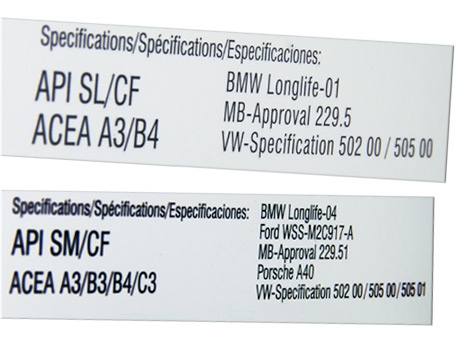
FCP recommends going with oil that meets your manufacturers certification, so you can be assured that the oil offers the proper protection for your specific vehicle needs. Finding an oil that meets your vehicles certification, as there are literally thousands of oil options out there might seem like a daunting task. In our example, we noted that a 2000 BMW 528i recommends oil that has a BMW LL-01 certification. Certifications can be found in the owner’s manual for your vehicle, as well. A quick search on the internet will find plenty of information about oils that do meet this certification. For our example vehicle we found the following oils which meet BMW’s LL-01 specification:
- Castrol Syntec European Formula SAE 0W-30
- Mobil 1 SAE 0W-40
- Pennzoil Platinum European Formula Ultra SAE 5W-30
- Valvoline SynPower SAE 5W-30
- Pentosin Pento High 5W-30
We recommend these oils because these oils meet the certification set by BMW.
Last but not least, let’s address oil change intervals. This is a highly debated topic across the internet and amongst car people. Despite the longer service life of synthetic oils, many people still prefer to change their oil every 3000 miles. Some synthetic oils can last as long as 15000 miles before breaking down. FCP’s recommendation has always been to follow your manufacturer’s guidelines. IF you plan on keeping your vehicle for a long time, change the oil regularly. FCP knows that oil changes are some of the cheapest preventative maintenances that you can do during the ownership of your vehicle.
Additionally we would like to extend our thanks to Pentosin for assisting in the making of this article.



